WHAT DO I SEE?
… or with which of my set of eyes am I looking?
Digesting more of the reading in the course I am taking at the Kerulos Center (https://kerulos.org). This article, by Gay Bradswhaw*, is about the different ways to see, the difference between information and message, the point that knowledge is relational, the difference between collective and subjective knowledge – introducing trans-species psychology and the obvious incongruence that bi-directional inference between human animals and other animals create.
Now I will focus on the seeing…
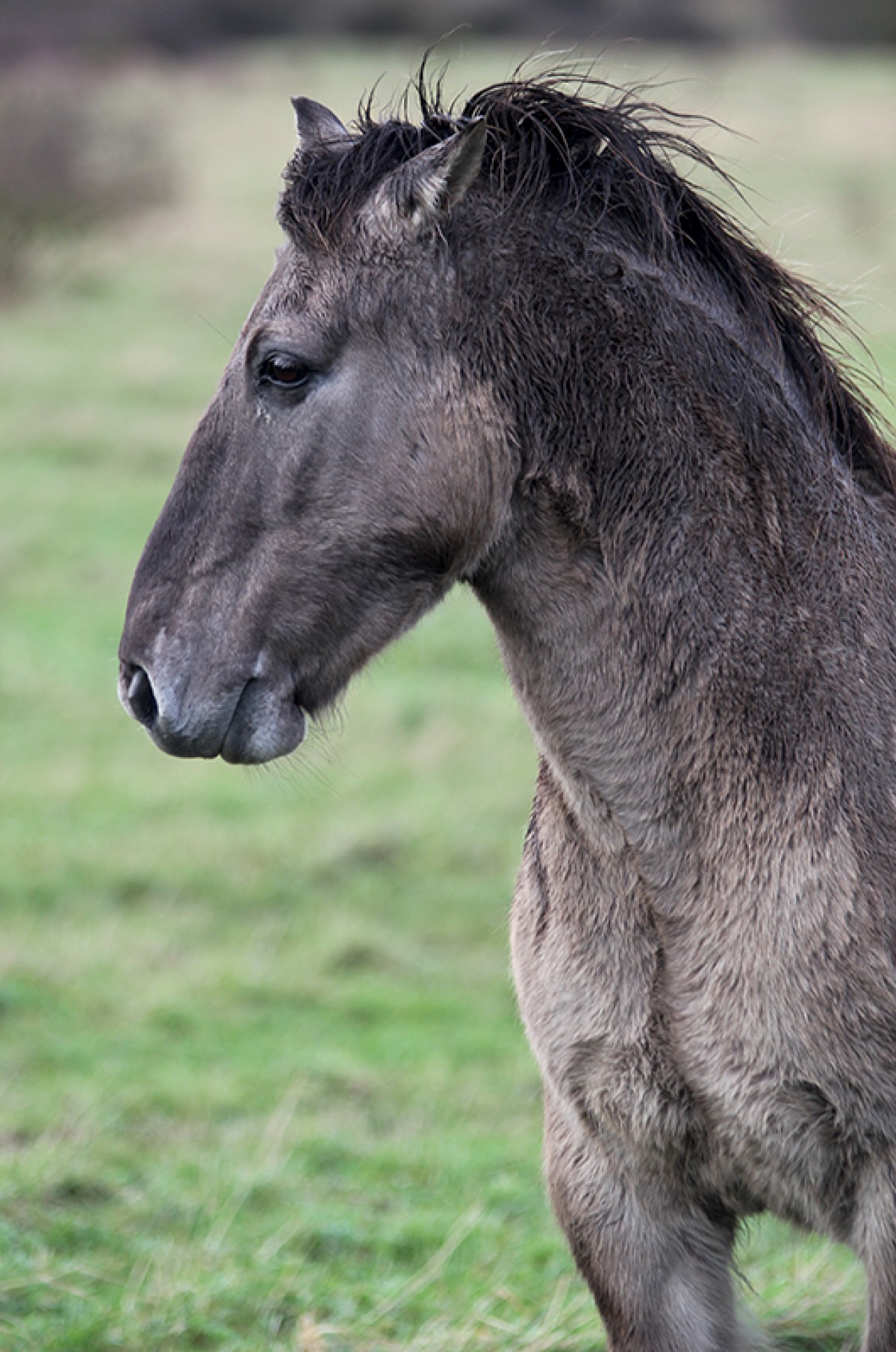 I have a friend that says – tell me what you see – and I will see you. That was a couple of weeks ago – and I have worked on that since then. The specifics of what she asked me to describe, was what I saw in my visit to the Koniks at Wicken Fen. I did write a blog post on that visit – describing what happened to me internally during that day (https://www.mimercentre.org/index.php/blog/the-real-horses-and-their-expressiveness-the-koniks-at-wicken-fen) I wrote about the dual process of seeing – and being aware of myself as a seer. That day was not a good day for me internally – and I knew what I saw, I saw through my own lenses of trauma. That day I was much more reactive than I had been in a long time, visiting horse herds. I think I know why now – I started that day with ignoring my needs to rest, to go slow, I was exhausted, but I let my wish to go to see the horses override the fact that I had run out of spoons (a concept/way of thinking of acknowledging your own capacity I picked up from Christine Fairweather). Then I paid for that during the day. I was visiting the herd with no access to internal resources, I went beyond my capacity. Still I am happy I went, I did manage to learn both about that, and some more.
I have a friend that says – tell me what you see – and I will see you. That was a couple of weeks ago – and I have worked on that since then. The specifics of what she asked me to describe, was what I saw in my visit to the Koniks at Wicken Fen. I did write a blog post on that visit – describing what happened to me internally during that day (https://www.mimercentre.org/index.php/blog/the-real-horses-and-their-expressiveness-the-koniks-at-wicken-fen) I wrote about the dual process of seeing – and being aware of myself as a seer. That day was not a good day for me internally – and I knew what I saw, I saw through my own lenses of trauma. That day I was much more reactive than I had been in a long time, visiting horse herds. I think I know why now – I started that day with ignoring my needs to rest, to go slow, I was exhausted, but I let my wish to go to see the horses override the fact that I had run out of spoons (a concept/way of thinking of acknowledging your own capacity I picked up from Christine Fairweather). Then I paid for that during the day. I was visiting the herd with no access to internal resources, I went beyond my capacity. Still I am happy I went, I did manage to learn both about that, and some more.
My friend asked me to have another go at it – she said – tell me what you saw (me hearing – now knowing what belonged to you – what did you see, outside of that?)
When I work as an Equine Professional in EAP/L – I work with what I see. My foundation, how I learned this work, comes from Eagala, I am no longer a member of Eagala – but I have (mostly) kept the foundation of how eagala-work is (was?) set up. That is, I as an EP focus on the horse(s)’ behaviors. And I relate what I see to clients/customers/participants – as neutral as I can. It has become second nature to me to filter out “me” from what I see. Because in sessions – it is not about me, what I see, on any other level than me providing material to possibly work with for someone else. I do take mental notes (or on paper) about what I see with the horses that I want to follow up, or if there needs to be any intervention during a session, on the behalf of the horses. I am there for them, so they can be them, and their welfare is my responsibility (physical, emotional, social, cognitive welfare…). Since I mostly work with loose horses out in their pastures – the horses have good opportunities to take care of themselves and provide the distance from people or the closeness to other horses, or what ever they need in the moment – for themselves. The more I restrict the horse from being able to take care of himself and provide himself with what he needs, the bigger my responsibility towards him grows. But that I will discuss another day.
So, this seeing that I work with in client/customer centered sessions – is as objective/neutral as I can do, and I work on matching my language to that level of seeing. It can sound like – I saw ears moving in different directions, I saw a black horse (or even 4-legger), I saw a mouth doing … mimicking chewing motions with my hand, I saw a red small horse with hands on a leg, I saw a white horse with a human by the horse’s side… and so on… I try to paint pictures of what I saw – without filling in any details at all, just to give the frame of what I saw.
I remember when I learned this – it felt as if I was objectifying the horse. What I tell about what I see in sessions lacks emotions, lack relations, lack communication – because it needs to lack my interpretations. It needs to lack my relation to these horses (at the same time as I am always ready to provide the horses with that exact relation – if needed). I know I cannot fully remove myself from the equation – just by being there – I am effecting what happens, I am just trying to keep it to a minimum, but still not follow any rules – at times, I need to leave this way of relate what I see – for any of the beings in the field (client/customer, horse, therapist), and I listen to the therapist I work with, who is at all times engaged with the level of emotional safety the client (customer) needs.
This is one way of seeing. This is also, mostly the way we are asked to see in research (but there the awareness – at least in the natural sciences) on the impact of the researcher is quite low. No one can be totally objective. We all have blind spots, we all add our biases, at one point or another. In my opinion it is better to be open and transparent with this, than pretend we can be totally objective.
But in both these settings, in the way I do EAP/L and in (natural) sciences, the aim is to see what happens – without making subjective interpretations. You work on removing yourself – not by denying that you are there, on the contrary, by being aware of that you are there, and then keep yourself out of it, to the best of your ability. You yourself – you have other moments in time you can be in the center (of mostly your own attention, but of course by others too).
So, what other ways are there to see (perceive)? Gay Bradshaw mentions 3 levels:
- Objective seeing
- I see a horse’s mouth just above the waterline doing small movements with his mouth
- I see a horse with the ears back
- Empathetic seeing
- I see a horse drinking water
- I see a horse communicating with his ears
- Affective seeing
- I sense that the horse is thirsty
- I see an irritated horse
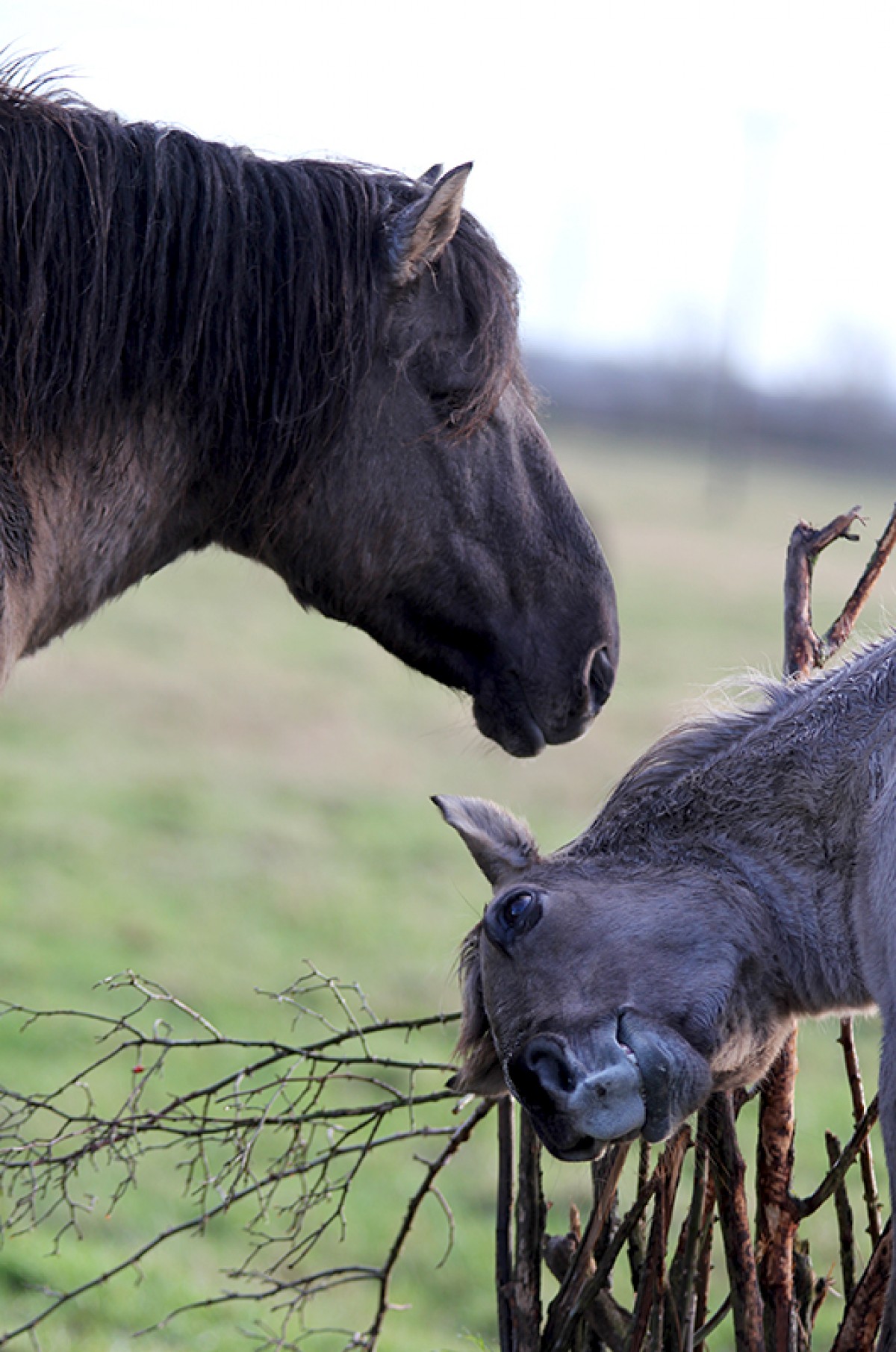 The objective seeing, we have discussed. Then, what is empathetic seeing? When I see with my empathetic set of eyes – I see through my own experience of what you are doing. And we have a shared way of communicating around that. I see you are drinking water – and you might answer (if you are a human) – Yes, it is nice and cold – it tastes good. You might also volunteer the information – I was thirsty. If I use my affective seeing – I might sense your thirst. I might even sense how good it feels for you to drink.
The objective seeing, we have discussed. Then, what is empathetic seeing? When I see with my empathetic set of eyes – I see through my own experience of what you are doing. And we have a shared way of communicating around that. I see you are drinking water – and you might answer (if you are a human) – Yes, it is nice and cold – it tastes good. You might also volunteer the information – I was thirsty. If I use my affective seeing – I might sense your thirst. I might even sense how good it feels for you to drink.
The first way of seeing, the objective way, is non-relational. The other two are relational. The second one – the empathetic seeing – is an equal seeing. I tell you what I see – in our common language – and you confirm or deny what I see – and we can do this – as a conversation. The conversation is not more about me – or you – it is about us, we share a moment.
The third way of seeing – the affective seeing – is about the seer. The seer sense what is seen in the other, within him/herself. You are aware (consciously or unconsciously) of how the other’s mood, state, emotions/feelings are affecting you.
So, to give someone agency – you need to use the second, empathetic way of seeing That way of seeing is seeing on an equal footing – where you both add the content of your emotions/feelings (thoughts, dreams, desires etc). The Affective seeing is there, in all of us, but if we mistake this for the truth of what goes on, then we take away agency from the one we are looking at. That is why talking about what you intuit about what goes on in other beings demands a very respectful way of communicating that (here is where I have problems with some of the ways more “spiritual” communities communicates about what horses can do for humans. As I also have problems with the more objectified ways of using horses as tools, horses as a mean/way/object/tool for humans to learn about themselves with/by/through.)
We can shift between these ways of seeing (listening, perceiving), if we are aware of them. Doing that also helps with ownership of internal processes.
So, what did I see that day at Wicken Fen? I of course saw a lot of ears back, ears forward, grey horse moving, open mouth with teeth on… different things, different parts of horse bodies moving against different objects, I saw horses decreasing distance to humans (two-leggers), I saw smaller grey horses lowering their heads, putting their heads under bigger grey horses, I saw two grey horses shifting between having more or less distance between each other – sometimes being on 4-legs, sometimes being on 2-legs, sometimes putting their mouths on each other’s bodies, etc, etc, etc…
Or I saw horses resting when we got there, not all of them, some were grazing, some playing, some nursing, some scratching their butts against bushes and so on. After we had been there for a while – the activity level in the field rose quite a bit. There were more intensive chasing of foals, more play (and bigger movements in play), there were more seeking out humans for different kinds of interaction (sniffing, tasting, exploring with teeth, asking for scratches etc), there were more interactions between the stallions, as in greeting each other, playing with each other, pooping in piles, scratching the ground with a front hoof, there were more herding of mares, more licking on things (stones, walls), more chewing on twigs etc, etc…
Or – I was affected by their higher rate of interaction between them and with us. It made me feel insecure. First I thought it was the horses, but on later contemplating this – it was more about the responses to their increased seeking of interaction from us humans that surprised me, again. My expectations of the day (yes expectations always mess things up for me), was not met. I thought we were going out to watch horses, not interact with them. Since I already was in a not perfect place for interacting with horses – this made it hard. I kept backing off. I wanted to see them, I wanted to register what they did in their horse-horse world – not in a horse-human world. And I did definitely not want to be part of that interaction. This is of course strange too... what I love almost most in the world – is to be out – alone (only human) in a field of horses, where interaction can be part of it, or not. This was neither what I was looking for this day, nor what I anticipated.
This day – my seeing jumped around, shifted a lot between these different levels.
I want to add one thing. Part of being aware of the more objective details – is being aware of the building blocks of communication/language. So my take on what can be deemed as objectifying – is not always the same (my behaviors and actions are also context bound). If I get stuck there, in an interaction with a being, only seeing the details, not the being – I usually fall into the affective seeing, which is not a wrong way of seeing - it is just not useful in the same settings as a more objective seeing, or a more empathetic seeing.
I work on zooming in and zooming out. To follow the shifts of seeing, from close up, focusign in on details, to zooming out – seeing the whole picture, from a bit of a distance, to see internally what the different ways of seeing is bringing up/out in me. To during sessions be aware of it – and outside sessions – learn more about me from it.
PS. A session can also be an educational event. Then I also need to shift between these ways of seeing. And be aware of where I myself am in this.
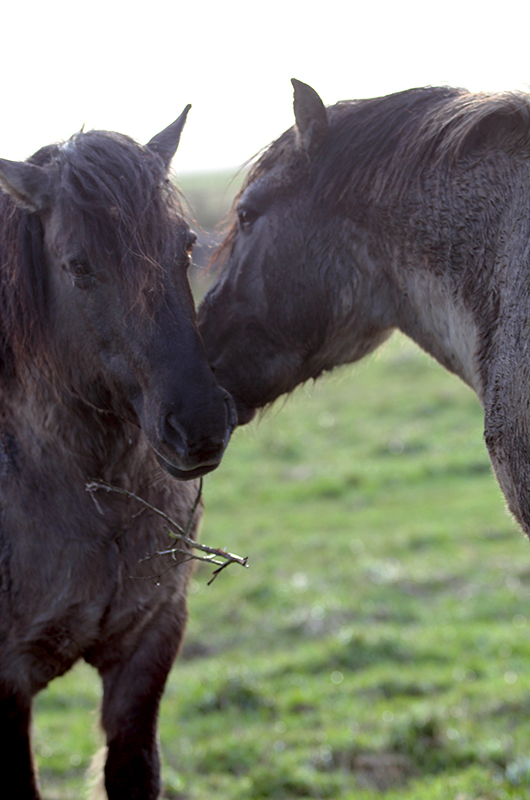 PS 2. One thing that also made me ask myself questions, there were over 60 horses, half of them stallions, in a field maybe 5 ha in size. This is not normally how horses live. Research points out that the smaller the area a horse herd lives in – the more interactions between them we will see – interactions are stress relieving, also the affiliative ones. The amount of relationships these hoses need to keep track on is, in my opinion, too high. Humans solve that with culture, laws etc – to coordinate “village living”. Horses normally live in family units, sometimes within bigger bands, which seldom includes more than 20 horses. At times they join in with other bands – depending on predator pressure and environment etc, but that is not how they live their ordinary day to day lives… I don’t know if we humans were catalysts of more interactions or if they normally interact this much with each other (and are seeking it from humans) … but it definitively stood out to me. I felt caught in some sort of dance floor/playground/speed-dating event for horses… (me seeing with my affective seeing…. 😊 )
PS 2. One thing that also made me ask myself questions, there were over 60 horses, half of them stallions, in a field maybe 5 ha in size. This is not normally how horses live. Research points out that the smaller the area a horse herd lives in – the more interactions between them we will see – interactions are stress relieving, also the affiliative ones. The amount of relationships these hoses need to keep track on is, in my opinion, too high. Humans solve that with culture, laws etc – to coordinate “village living”. Horses normally live in family units, sometimes within bigger bands, which seldom includes more than 20 horses. At times they join in with other bands – depending on predator pressure and environment etc, but that is not how they live their ordinary day to day lives… I don’t know if we humans were catalysts of more interactions or if they normally interact this much with each other (and are seeking it from humans) … but it definitively stood out to me. I felt caught in some sort of dance floor/playground/speed-dating event for horses… (me seeing with my affective seeing…. 😊 )
There is much more to be said about this, of course. Just skimming the surface, looking for the right words. Now I will dive back into the course literature. We have a long list… and though it is frustrating, I can no longer read as fast as I used to… I feel a need to digest the texts – work with them, and that is a much slower process than “just reading for information intake.”
* Unfortunatley I do not have the name of the article/book I am referencing here - I only have a copy from what I think is part of a chapter. I will check that up.
Text and Pictures are copyright protected © Katarina Lundgren, MiMer Centre, 2020
When you subscribe to the blog, we will send you an e-mail when there are new updates on the site so you wouldn't miss them.
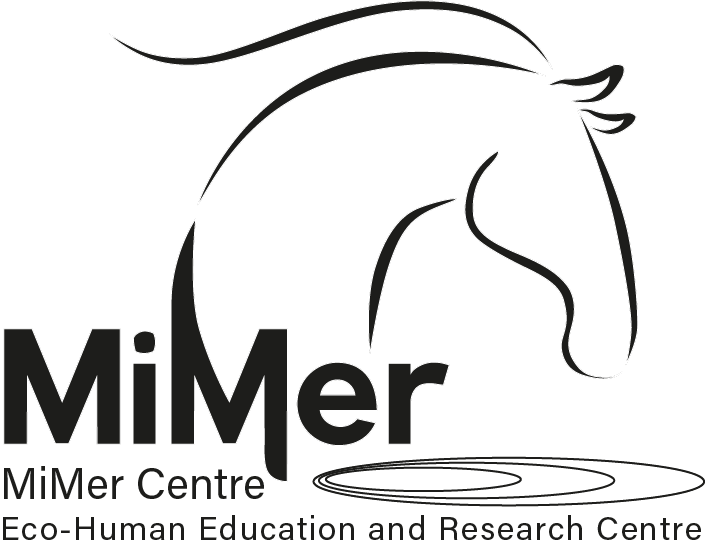
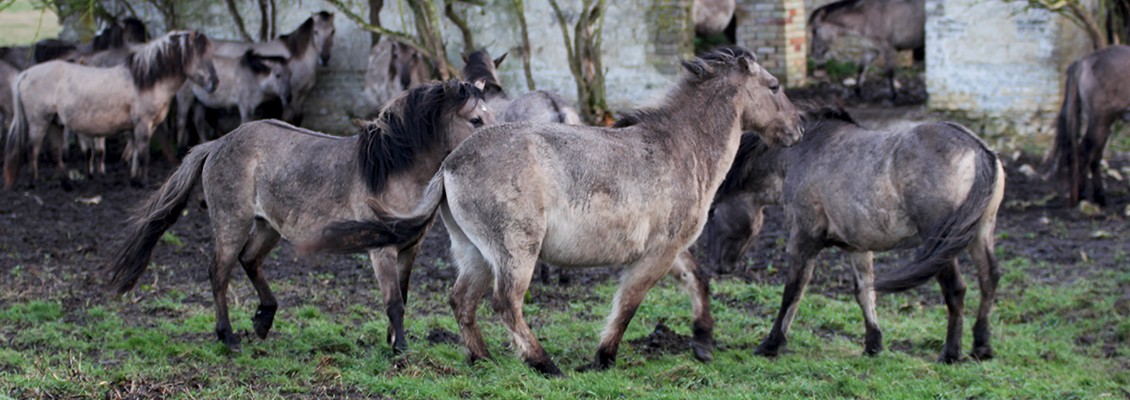
Comments